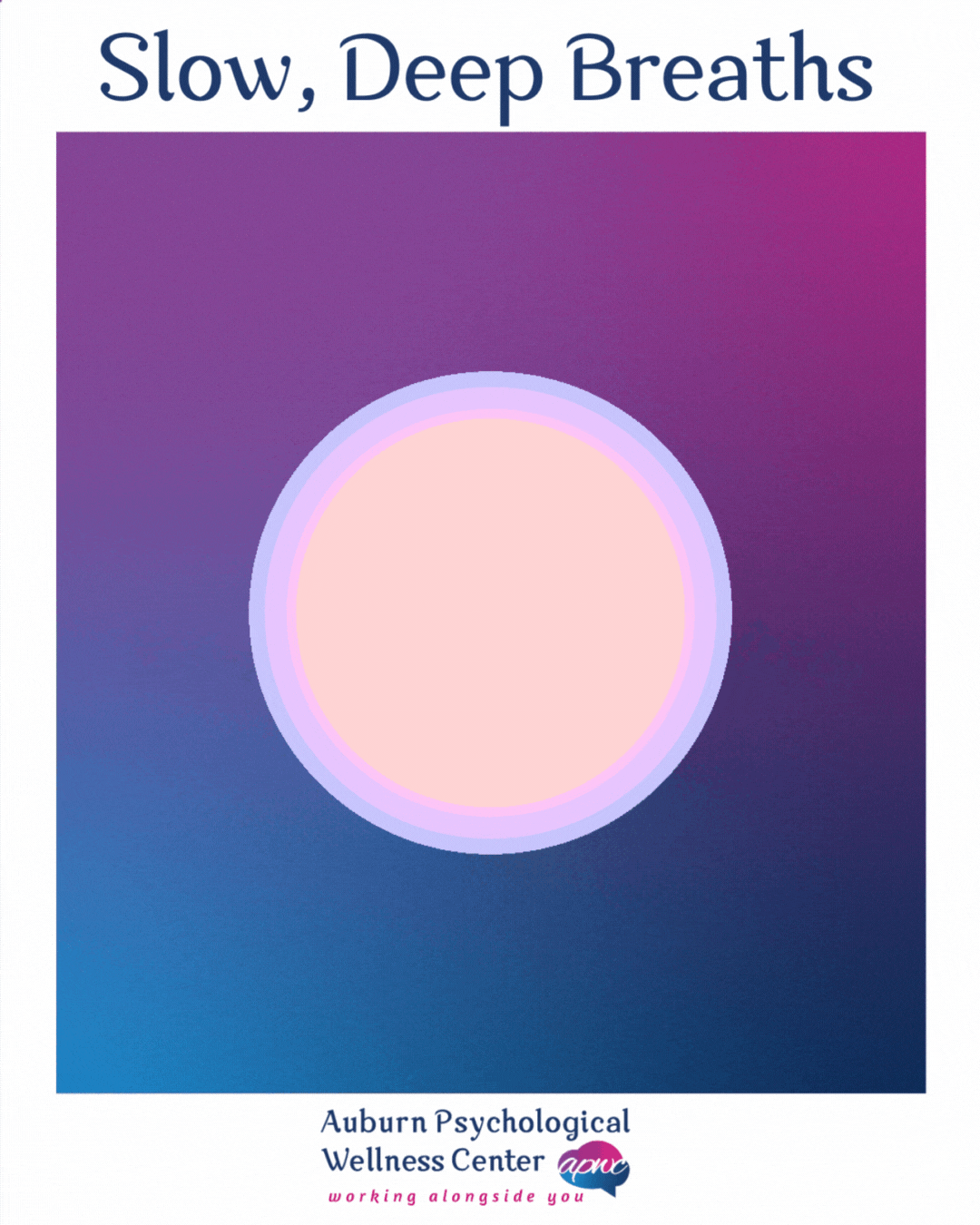 Deep breathing is a foundational skill for most other relaxation exercises. And, for many people, it can be an effective coping skill on its own.
Deep breathing is a foundational skill for most other relaxation exercises. And, for many people, it can be an effective coping skill on its own.
Why is Deep Breathing Important?
Many difficult emotions also have a body response that changes our breathing. Anxious worry or panic can cause fast, shallow breaths that make us feel short of breath or dizzy. When we are angry, we may breath faster or we may hold our breath if we are trying to stop our anger response. Even more pleasant emotions like excitement can increase our breathing rate and make us want to move around. But, if we are in a place where we need to remain calm, we need to regulate our excitement.
Notice Your Breath
When you first focus on learning deep breathing, it can be helpful to sit in a chair with good back support and your feet flat on the floor.
First, simply take a full breath in and out, noticing any movement within your body. Did your shoulders rise? Did it feel like you were breathing into your chest? If so, you will want to modify some things on the next breath. Our lungs extend to near the bottom of our rib cage. Under our lungs is a muscle called the diaphragm, the main muscle that supports our breathing. It should expand out when we breath in deeply, pushing out our stomach to allow more air into our lungs. And, it contracts when we breath out to force air out of our lungs, causing our stomach to fall during the out-breath. This is why deep breathing is sometimes called belly breathing or diaphragmatic breathing.
How to do Deep Breathing
 Now, try again. Take a slow (about 4 seconds) breath in (the inhale) through your nose. Focus on filling your lungs in a way that causes your stomach to push out instead of making your shoulder rise.
Now, try again. Take a slow (about 4 seconds) breath in (the inhale) through your nose. Focus on filling your lungs in a way that causes your stomach to push out instead of making your shoulder rise.
After your slow breath in, breathe out (the exhale) slowly (at least 4 seconds) through your mouth or nose. Notice your belly fall as you let the air out of your lungs.
Take a few slow, deep breaths in this way. The breathing GIF we provided in this post is about a four second inhale (as the circle expands) and four second exhale (as the circle contracts). Some people may find this to be a helpful guide for their initial practice, especially if they are used to taking much quicker breaths. However, others will want more than a combined eight seconds per breath, as described next.
Variations
After taking a few deep breaths using the basic technique, there are a few variations that can be tried. Some people find it helpful to gently hold their breath for a few seconds after inhale, pausing before before they begin their exhale. And some find it better to make their exhale longer than their inhale (for example, a 7 second exhale after a 4 second inhale) or to pause before their next inhale.
Also, some people find they achieve a greater relaxation response by making a sound during exhale, such as ‘haaaaa’ or a sigh. This can be great when you are practicing alone or around those with whom you feel comfortable. However, if you breathe out through your nose, deep breathing is a coping skill that can be practiced inconspicuously, such as in class, at work, or while waiting in line. It is an easy way to help regulate your body when you notice it start to become activated.
Occasionally, people feel some dizziness when they first practice this exercise. They can stop the exercise and return to normal breathing to recover. The longer exhale and allowing pauses between breathing may help people avoid dizziness. Of course, you should consider your specific medical needs before practicing this or any other exercise.
An Exercise For Children and Adults
Deep breathing is a useful coping skill for children, adolescents, and adults. Most people benefit from practicing this skill when they are feeling relatively calm. That way, when they encounter anxiety or other symptoms, they will more easily notice their fast, shallow breaths and can implement deep breathing to re-regulate.
If you have a loved one who has panic or other intense worry symptoms, they may benefit from having someone gently guide them through this deep breathing exercise. Children especially may benefit from a video guide to start out, such as this belly breathing instruction for kids or this guided video that teens may prefer (adult readers may also appreciate the guidance!). After becoming comfortable with this skill, consider additional additional coping skills to your repertoire, like the 5-4-3-2-1 Grounding Exercise.
Schedule an Appointment
A mental health professional can help you to master this grounding skill and learn additional ways to cope. If you live in the state of Alabama or can visit Auburn, AL for an in-person appointment, you can schedule an appointment at Auburn Psychological Wellness Center. We offer counseling, psychiatry services, and psychological assessment. We have providers who can see children (8+), teens, and adults. Call us at 334-219-0425 or review our information on scheduling an appointment.
APWC Blog
Check out additional blog posts from Auburn Psychological Wellness Center. We post periodically on topics related to mental health, coping, relationships, counseling, and psychiatry.
[…] the next steps. If you are not already familiar with deep breathing, you may want to check out our post on that coping skill […]